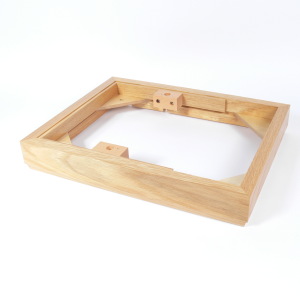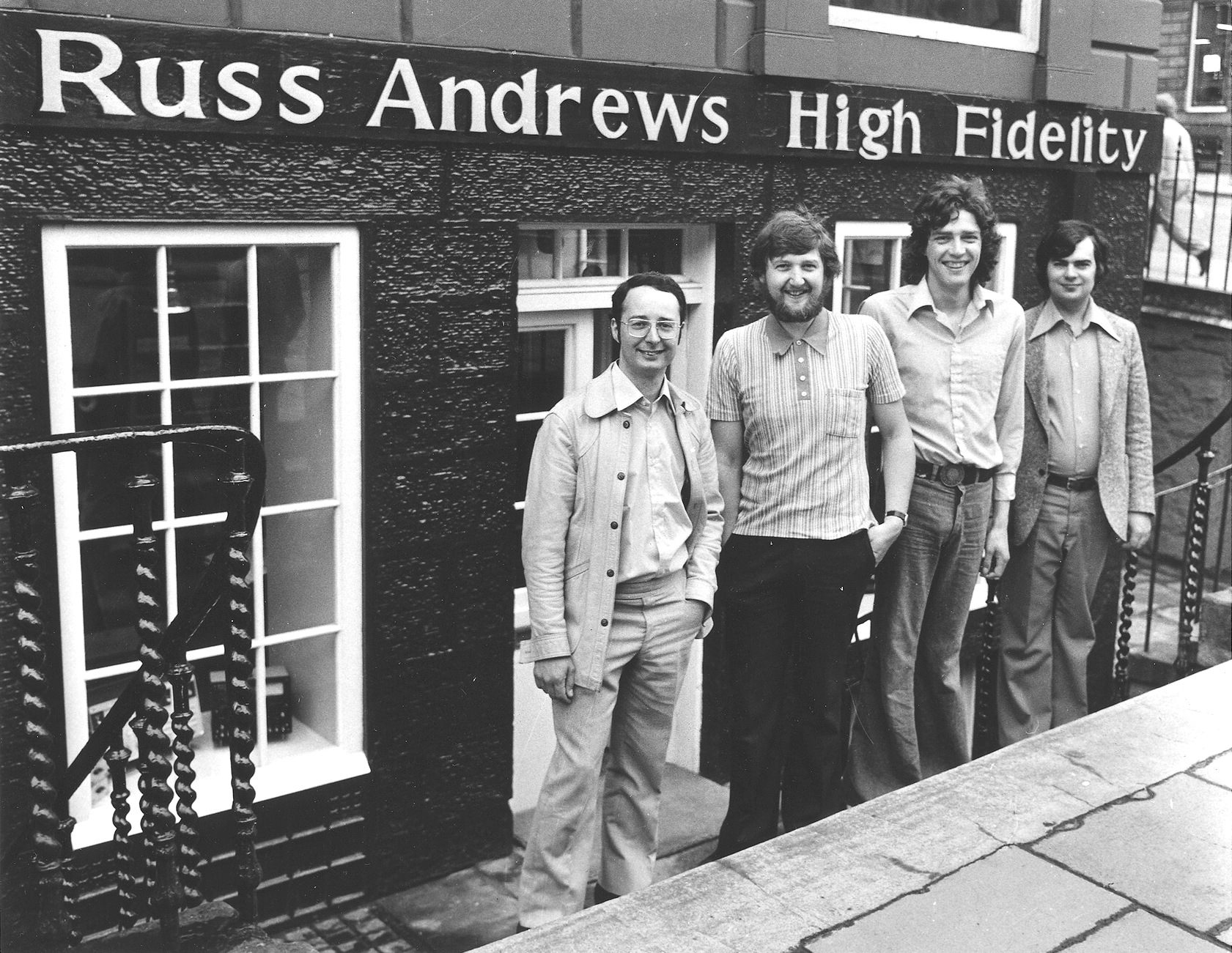
Russ Anndrews High Fidelity in Edinburgh - find out more below
It’s easy to forget just how influential Russ’s ideas have been on the shape of the industry today, with a new generation of both Hi-Fi enthusiasts and
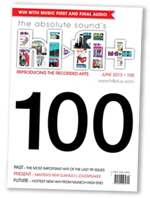 journalists possibly unaware of his impact. This is, perhaps, what inspired veteran writer and reviewer Roy Gregory to include Russ’s mains products in his choice for ‘the most important Hi-Fi of the last 99 issues’ in the 100th edition of Hi-Fi+ magazine back in 2013. Roy said: "Since then, others have come (and gone) and our understanding of the inner workings of audio systems and their vulnerability to outside influence has advanced enormously. The Russ Andrews path may no longer be the only route up the mountain – but without it we wouldn’t even have noticed that there’s a mountain there!"
journalists possibly unaware of his impact. This is, perhaps, what inspired veteran writer and reviewer Roy Gregory to include Russ’s mains products in his choice for ‘the most important Hi-Fi of the last 99 issues’ in the 100th edition of Hi-Fi+ magazine back in 2013. Roy said: "Since then, others have come (and gone) and our understanding of the inner workings of audio systems and their vulnerability to outside influence has advanced enormously. The Russ Andrews path may no longer be the only route up the mountain – but without it we wouldn’t even have noticed that there’s a mountain there!"Similarly, a recent review of our RANS-1 Network Switch on Hi-Fi Pig.com, began with the following precis:
"Russ Andrews is probably behind an awful lot of philosophies that we audiophiles have been following for years. Russ was instrumental as a dealer in the 70’s, working with both Linn and Naim, reportedly being a key influence in convincing Naim to sell to the domestic market and being their first dealer! An early adopter of the benefits of using high-quality speaker cables and interconnects, he was a guiding light in carrying over those thoughts and ideas to mains cables, having already released his own mains noise suppression products. Russ was similarly pioneering with ideas on light but stable stands, on which to place speakers, turntables, and other system components. Indeed, Russ Andrews did an awful lot to help the industry understand these things, back in the ’80s and ’90s". Hi-Fi Pig online magazine
Let’s expand on this story…
First steps: from toes to toe-tapping.
How do you go from studying to be a chiropodist to becoming a partner in a Hi-Fi shop? It seems a strange change of career direction, but that’s exactly what happened to Russ following a move to Edinburgh to study chiropody in the mid-1960s. Having previously been employed by GEC telecommunications as a test engineer, to support himself he took a part-time job repairing Hi-Fi equipment and radios at Hi-Fi shop Audio Aids.
Russ explains: "Fergie Meek, the owner, recognised that Hi-Fi was my métier and persuaded me to become a partner in the business. That only lasted a couple of years but oh! what a crucial learning experience it was. I helped Fergie finish building a small recording studio in the basement and he had a contract with Heriot Watt University and others to make recordings of concerts, meetings, conferences etc."
"The variety of recording projects I got involved in was vast and the experience invaluable. With a range of the best microphones and tape recorders at my disposal, and a recording studio, I learned what all the individual mics sounded like and how each type was suited to which situation. Insights that have informed my music listening down the years."
"The realisation that something outside of the system could make profound differences to the musicality was my first Hi-Fi OMG! moment."
Russ says: "In the shop, I also discovered that having other loudspeakers in the room when demonstrating degraded the rhythm and timing of the system playing. The realisation that something outside of the system could make profound differences to the musicality was my first Hi-Fi OMG! moment."
"I realised that the sound and the musical quality of a system was affected by everything around it not just by the hardware itself. All this went against conventional wisdom."
Russ’s solution was to build one of the first, if not the first, dem’ rooms in the UK, paving the way for what was to become standard industry practice. He could also show the effect that other speakers, empty boxes etc. present in the room had on the musicality of the system being demonstrated. Three years later, on experiencing this effect during a visit to Russ at Hi-Fi Corner (see below), Ivor Tiefenbrun, founder and Chairman of Linn Products was so convinced that he insisted that all his dealers must demonstrate in what he called 'Single Speaker Listening Rooms’!
Cornering the market
By late 1971, Russ took the opportunity to buy Edinburgh’s established Hi-Fi Corner dealership, in partnership with Graham Tiso, and it was around this time that he put together what was regarded as the system of the day - a Thorens TD124 turntable, Quad 33 and 303 amps and Spendor BC1 loudspeakers - only to discover that it failed to deliver the musically-involving sound he was expecting from this level of kit. It was this very experience that prompted Russ to embark on his lifelong quest to discover how to achieve truly enjoyable music from any level of Hi-Fi system, and how important other factors such as the room and infrastructure impacted on this.
The Linn and Naim link
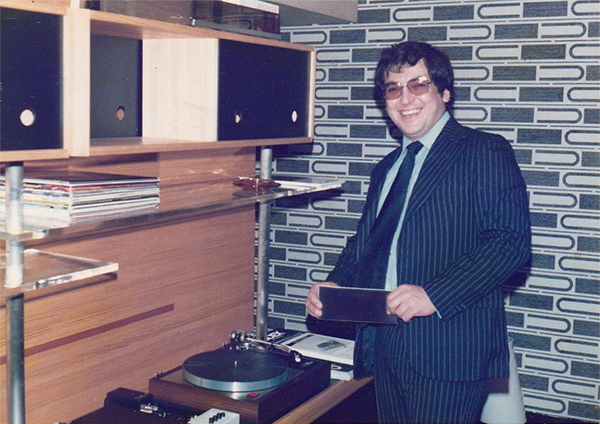 As luck would have it, shortly afterwards, a visit from Ivor Tiefenbrun (pictured right) introduced Russ to the Linn Sondek LP12 turntable, a product that he quickly recognised as having superior musical merit and which challenged the conventional view that the source component was of little importance. "This was an era when it was believed that all amplifiers sounded the same, any turntable would do the job and the most important component was the loudspeaker" says Russ. He immediately saw the potential for the LP12 and became its key evangelist and biggest retail customer.
As luck would have it, shortly afterwards, a visit from Ivor Tiefenbrun (pictured right) introduced Russ to the Linn Sondek LP12 turntable, a product that he quickly recognised as having superior musical merit and which challenged the conventional view that the source component was of little importance. "This was an era when it was believed that all amplifiers sounded the same, any turntable would do the job and the most important component was the loudspeaker" says Russ. He immediately saw the potential for the LP12 and became its key evangelist and biggest retail customer.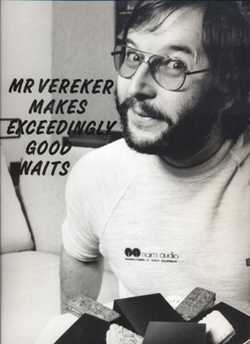 Their friendship developed, and it was through Ivor that Russ met and befriended Julian Vereker - founder of Naim Audio. Russ recalls: "Once Ivor had developed the Isobarik loudspeaker, he realised that none of the available amplifiers were good enough to drive it."
Their friendship developed, and it was through Ivor that Russ met and befriended Julian Vereker - founder of Naim Audio. Russ recalls: "Once Ivor had developed the Isobarik loudspeaker, he realised that none of the available amplifiers were good enough to drive it.""Fortunately for all, Ivor happened to be introduced to Julian Vereker. Julian had designed a powerful, and very expensive pro audio amp, the NAP 200, and also had a prototype of a lower power, cheaper version he called the NAP 160. On returning from a dealer trip, where he’d been using my own Crown DC 300 amp for demonstration purposes, Ivor brought the 160 straight round and played it. It was a revelation! I said I must have that to use and sell. A deal was done with Julian to buy ten and for me to be his first Hi-Fi Dealer, on condition that I paid up front and waited until they were made. It was a deal I couldn't refuse!"
"Naim was a very small company at that time but, inevitably, I asked for a preamp to go with the 160 and auditioned the first prototype on a wooden board. It was the start of an exciting period of my Hi Fi career as part of the Linn/ Naim/ Russ Andrews triumvirate promoting musicality, rhythm and timing as the most important aspects of listening to music."
Russ Andrews High Fidelity
The Edinburgh shop that people still remember - Russ Andrews High Fidelity of 34, Northumberland Street - was born in late 1976. Russ's partners in Hi-Fi Corner insisted on changing their business model to compete with the box-shifting warehouse-type shops like Comet that had sprung up and who gave no advice, demonstrations or service.
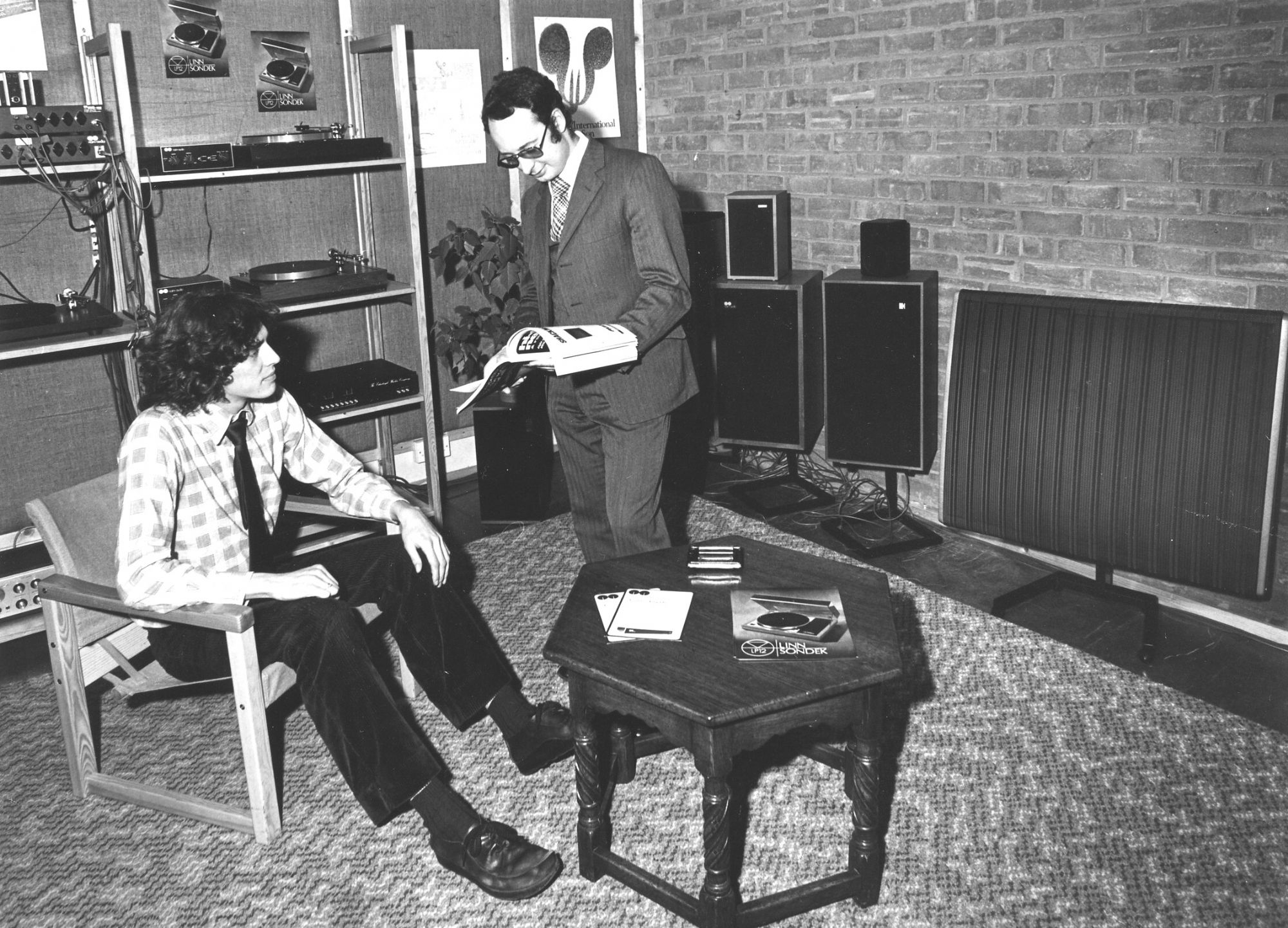
Inside Russ Andrews High Fidelity
Russ and his staff refused to accept that change, resigned and set up a shop on their own selling a limited range of carefully-chosen equipment, giving good demonstrations, five years free service, home installations, and no cash discount. To their surprise, a large number of their old customers came to their support with orders that got them off to a great start.
Clearly, they were right in believing that a sufficient proportion of Hi-Fi customers valued high quality equipment backed by knowledgeable advice and great service over cash discounts. The formula was so successful that some of those customers are customers of Russ Andrews Accessories today.
Another change of direction – Nytech and QED
A serious car accident precipitated another change in direction and Russ made the decision to leave retailing and become a freelance Research and Development (R&D) consultant. Work for Nytech followed, especially on their range of integrated amps and tuners (CTA252, CTP102, CPA602, CXA252 etc), renowned for their highly musical performance.
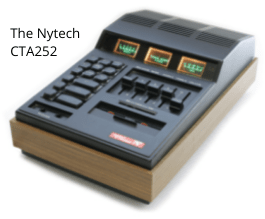
Through a German Nytech dealer, Volker Bohlmier, Russ was introduced to a cable manufacturer who was willing to work with him to develop some interconnect and speaker cables. "I was able to audition the wires at all stages of the manufacturing process", he recalls, "and so optimise wire gauges, insulation materials, construction etc. I found that the sound was affected by every stage in the process from drawing the wire to spooling the finished cable onto the final drum."
"I noticed that wires have directionality entirely by accident in about 1979. I didn't believe my ears at first, but it was consistent and could be demonstrated to others, so I looked into it further. I met a couple of telecoms engineers who knew about the issue through their work installing telephone wires across Australia. Every few miles they needed an amplifier to boost the signal level and noticed that the direction they ran the cable between amplifiers made a big difference to the signal to noise ratio. This allowed them to increase the distance between amplifiers, whilst maintaining a consistent signal - an important factor if your route is thousands of miles long!"
"I noticed that wires have directionality entirely by accident in about 1979. I didn't believe my ears at first, but it was consistent and could be demonstrated to others."
"The resulting cables were launched by QED as their directionality-marked Incon range. By sheer coincidence Ray Kimber in the USA was just launching a cable using a woven construction I hadn't thought of trying! He, of course, went on to draw the wire himself and use Teflon insulation. My error was put right in 1986 when I met Ray at a CES show in Chicago, recognised what he had achieved and became the Kimber Distributor in the UK.
Working with ARC and Meridian
Through his association with Nytech, Russ also started working for ARC loudspeakers. He was involved in the ARC 101 then 102, 103, 050 and is particularly proud of his work on ARC 801 drive unit, where he and Alistair Clarke (formerly of Mordaunt Short) designed and made the units themselves. "One of the many things I learned" Russ observes, "was this: ‘Your job as the Production Director is to make the product sound better, easier to make and cheaper to manufacture’! Sound advice but how difficult to achieve. It is a discipline I have applied in everything I have designed since."
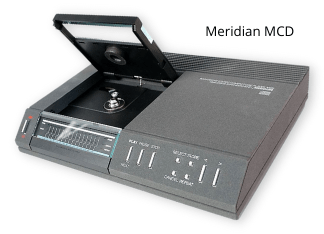
Bob Stuart of Meridian Audio also asked Russ to work for him as a consultant, just as they were completing work on their first CD player. At first, Russ was rather confused: "Bob is a very fine electronics design engineer and I asked him 'why me'? He said, 'because you will tell me the truth, whether it is in your interests or not to do so'. I listened to lots of their products and made lots of suggestions for improvement. Some of which were even actioned!".
By the early eighties, Russ was still kept busy at QED, developing a range of components including amplifiers, tuners, turntables, cartridges and loudspeakers, and also spent many months travelling around the USA trying to set-up distribution for ARC and Nytech through a network of dealers.
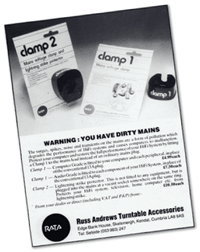 It was whilst travelling in the States that Russ came across a spike filter which would eventually, with a lot of work and the help of Richard McGinnis (an engineer at NASA), turn into his first mains power product, the Clamp1, which, in turn, would evolve into the SuperClamp we have today. The next few years saw Russ taking on distribution of Grace and Supex cartridges and developing his own, independent awardwinning range with Goldring. This led to the key moment of transition when he established Russ Andrews Turntable Accessories (RATA), the company which, reflecting a changing market and his distribution deal with Kimber Kable, would shortly become simply ‘Russ Andrews Accessories’, the name we are still known as today.
It was whilst travelling in the States that Russ came across a spike filter which would eventually, with a lot of work and the help of Richard McGinnis (an engineer at NASA), turn into his first mains power product, the Clamp1, which, in turn, would evolve into the SuperClamp we have today. The next few years saw Russ taking on distribution of Grace and Supex cartridges and developing his own, independent awardwinning range with Goldring. This led to the key moment of transition when he established Russ Andrews Turntable Accessories (RATA), the company which, reflecting a changing market and his distribution deal with Kimber Kable, would shortly become simply ‘Russ Andrews Accessories’, the name we are still known as today.For more information on what happened next, visit the Russ Andrews timeline


















